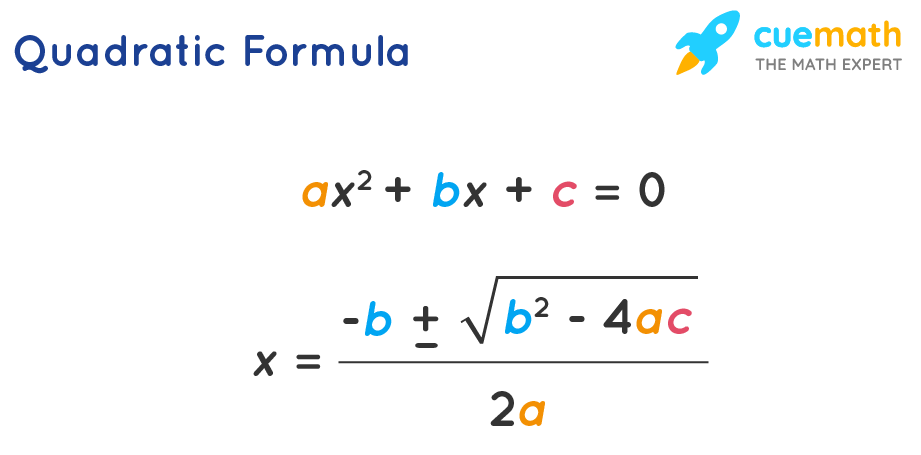Find the nature of the roots of the following quadratic equations. If the real root exist, find them:
i) 2x2 - 3x + 5 = 0 ii) 3x2 - 4√3 x + 4 = 0
iii) 2x2 - 6x + 3 = 0
Solution:
The general form of a quadratic equation is ax2 + bx + c = 0
b2 - 4ac is called the discriminant of the quadratic equation and we can decide whether the real roots exist or not based on the value of the discriminant.
We know that,
(i) Two distinct real roots, if b2 - 4ac > 0
(ii) Two equal real roots, if b2 - 4ac = 0
(iii) No real roots, if b2 - 4ac < 0

(i) 2x2 - 3x + 5 = 0
a = 2 , b = -3, c = 5
b2 - 4ac = (- 3)2 - 4 (2) (5)
= 9 - 40
= - 31
b2 - 4ac < 0
Hence the equation has no real roots.
(ii) 3x2 - 4√3 x + 4 = 0
a = 3, b = - 4√3, c = 4
b2 - 4ac = (- 4√3)2 - 4(3)(4)
= 16 × 3 - 4 × 4 × 3
= 48 - 48
= 0
b2 - 4ac = 0
Hence the equation has two equal real roots.
We know that, x = [- b ± √ (b2 - 4ac)] / 2a
x = - b/2a [Since, b2 - 4ac = 0]
x = -(- 4√3)/2(3)
= 2/√3
Roots are 2/√3, 2/√3
(iii) 2x2 - 6x + 3 = 0
a = 2, b = - 6, c = 3
b2 - 4ac = (- 6)2 - 4(2)(3)
= 36 - 24
= 12
b2 - 4ac > 0
Hence the equation has two distinct real roots.
We know that, x = [- b ± √ (b2 - 4ac)] / 2a
x = [-(- 6) ± √12] / (2)2
= (6 ± 2√3) / 4
= (3 ± √3) / 2
Roots are x = (3 + √3) / 2 and x = (3 - √3) / 2
☛ Check: NCERT Solutions for Class 10 Maths Chapter 4
Video Solution:
Find the nature of the roots of the following quadratic equations. If the real root exist, find them: i) 2x² - 3x + 5 = 0 ii) 3x² - 4√3x + 4 = 0 iii) 2x² - 6x + 3 = 0
Class 10 Maths NCERT Solutions Chapter 4 Exercise 4.4 Question 1
Summary:
The nature of the roots of the following quadratic equations are such that i) 2x2 - 3x + 5 = 0 has no real roots, ii) 3x2 - 4√3x + 4 = 0 has two equal rooots 2/√3, 2/√3 and iii) 2x2 - 6x + 3 = 0 has two distinct real roots (3 + √3)/2, (3 - √3)/2 respectively.
☛ Related Questions:
- Find the values of k for each of the following quadratic equations, so that they have two equal roots.(i) 2x2 + kx + 3 = 0(ii) kx ( x - 2) + 6 = 0
- Is it possible to design a rectangular mango grove whose length is twice its breadth, and the area is 800 m²? If so, find its length and breadth.
- Is the following situation possible? If so, determine their present ages. The sum of the ages of two friends is 20 years. Four years ago, the product of their ages in years was 48.
- Is it possible to design a rectangular park of perimeter 80 m and area 400 m^2? If so, find its length and breadth.
visual curriculum
